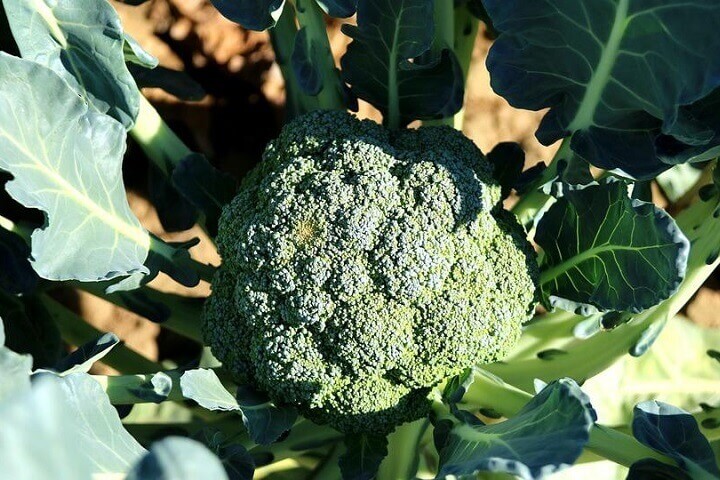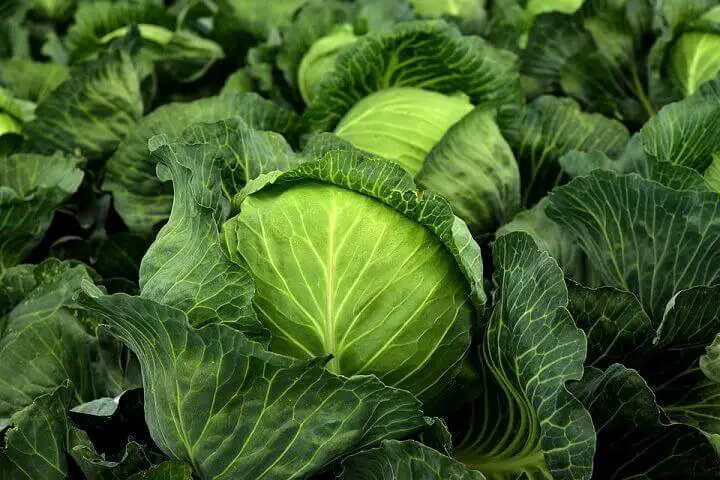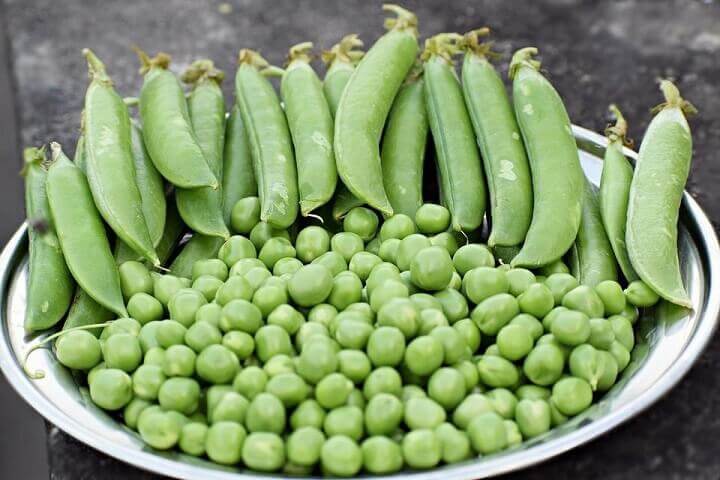Estimated reading time: 13 minutes

As the summer heat peaks, we're all looking forward to some cooler weather. Spring is the most popular time to plant a garden, but there is plenty of time in the fall to grow all sorts of vegetables.
Depending on where you live, the time window for fall gardening could be as short as a few weeks or as long as the entire winter. While summer gardens produce beautiful pumpkins, gourds, and melons, there are plenty of fall vegetables you can still plant as the leaves start to change.
Difference Between Warm and Cool Weather Crops
Vegetables are broken into cool weather and warm weather crops. This determination reflects the plant's tolerance to heat.
Cool-weather crops are usually planted in early spring for a quick harvest before temperatures start to rise. They also are planted in the early fall to take advantage of every ounce of the growing season.
Warm weather crops can be started indoors in the spring and then moved outside once they're established. There are also warm weather plants that prefer to be sown in warmer soil as seeds.
How Do Spring and Fall Gardening Differ?
While spring and fall gardens can technically include the same cool-weather vegetables, there's a big difference between them. The looming winter season that follows up fall means there's a firm stopping point for most fall garden growth.
The seeds that you planted in early spring could spill over into summer and may still do okay. However, any plants that don't make it to harvest by the first winter frost are usually goners.
It is also important to remember that, while spring and fall growing seasons have cooler temperatures than summer, they are opposite in temperature transitions. Spring starts cold and moves to warm, while fall starts warm and moves to cold. This simple transition could mean a world of difference depending on the vegetables you choose to plant.
Still, you can take advantage of the fall growing season with some careful planning and keeping an eye on those overnight temperatures. Here are, in my opinion, the best fall garden vegetables.
Beets

While beets can grow well during the summer, they are also a great option for the fall garden. Beets do best when started from seed, and this root vegetable can handle a deep frost as well. They produce a gorgeous red vegetable underground that also shoots up beautiful green tops that are also edible.
Try planting beet seeds again in late summer to see how they do in your climate over the fall period. Beets tend to be sweeter in the fall with better color as well.
Here's how to grow an amazing crop of fall beets in your garden.
Broccoli

Fall is the ideal time to plant broccoli seeds in the garden. The seedlings prefer warmer soil to establish, while the mature plant can handle the colder temperatures and occasional frost of early winter.
Broccoli is a bit of a slower grower, so choose a quick-growing variety to enjoy the florets before winter arrives. The cooler fall season creates sweet and tender heads compared to spring plants.
Here's how to grow broccoli in your fall garden.
Bush Beans

There are two different categories of beans for the garden: pole and bush. Pole green beans are climbers and require more time to establish and produce beans for harvest. Bush beans, however, grow in small clumps and can produce green beans in about six weeks.
Bush beans are a great fall vegetable as they go so well with fall meals like casseroles and stews. They are still a bit picky about the frost, so make sure to cover them if they are still producing on cold nights.
Here's how to grow bush type beans.
Cabbage

Another great cool weather vegetable for a fall garden is cabbage. While you can plant cabbage in the spring, the cooler fall temperatures that move from hot to cool help the head of the cabbage form well.
Cabbage is slower to grow to maturity, so it may be a good idea to start the seeds indoors and transplant them to the garden in mid to late summer. Cabbage is hardier than other fall vegetables and can stand up to frost if you keep an eye on them and cover when needed.
Here's how to grow cabbage in the fall.
Carrots

As a root vegetable, some carrot varieties aren't well suited for shorter fall growing seasons. However, there are a few smaller options, like Thumbelina or Tendersweet, that produce a cute little carrot that is sweet and perfect for cool weather gardening.
Smaller varieties will be ready in about 50 days, and there is nothing more surprising or satisfying than pulling out a carrot from the garden. For longer varieties, consider starting them in a deep pot indoors before transplanting out to a fall garden.
Here's how to grow and harvest carrots in the fall.
Cauliflower

As a slow-growing plant, cauliflower is best for gardens in warmer locations with longer fall seasons. It's a great vegetable to grow in the fall because the cooler temps allow the heads to form in a tighter formation, making the finished product more tender.
It can take about three months for the cauliflower to grow large enough to harvest, so patience is key. The head can't handle much frost, so it's essential to keep an eye on the weather and pluck the head before it's too late.
Here's how to grow cauliflower in the fall.
Garlic

It's much better the plant garlic in the fall instead of in the spring. If you plant garlic cloves in the fall, they'll have all winter to establish roots, which will lead to vigorous growth in the spring.
Plant them about two inches deep in a sunny spot with the pointed end facing up. Be sure the soil is well-draining so they don't get root rot, and also be sure to mulch them heavily to protect them from any extreme cold snaps.
Here's how and when to plant garlic in the fall.
Kale

Another easy green and leafy vegetable to grow is kale. As a vegetable that is becoming more popular in stores and restaurants, kale is an excellent addition to the garden and is pretty easy to grow.
The leaves are easy to see, and most varieties can handle a light frost with no issues. In fact, the leaves actually get sweeter after a few touches of frost.
Kale can do well in parts of the garden that have partial shade to full sun. Add the harvested leaves to soups and stews for a fresh taste at every fall meal.
Here's how to plant and grow kale in the fall.
Lettuce

As one of the easiest plants to grow, lettuce is the main star of the show when it comes to fall gardens. It requires only a little bit of space, and the seeds are tiny and easy to plant. Most varieties mature in about 50 days, and there isn't much guessing when it comes to determining if the veggie is ready to harvest or not.
Plant lettuce in succession, meaning every few weeks, so that you have fresh greens from the garden all fall and into winter (and aren't drowning in lettuce that matures all at the same time).
While all leafy greens aren't the same, spinach and arugula can be easily swapped in for lettuce with the same harvest rate and preferences as lettuce.
Here's a guide to growing lettuce in the fall and early winter.
Onions

Onions do better when planted in the fall because the cooler temperatures help establish their root systems well before harvesting time in the following spring or summer. Be sure to choose varieties that are known for their long storage life in case you can't use them all at once.
Also, be sure to use plenty of mulch to how regulate the soil temperature and retain consistent moisture, which is crucial for healthy growth.
Here's how to plant and grow onions in the fall.
Peas

Another cool weather vegetable that's fun to harvest is peas. This delightful plant offers sweet pea pods that you can eat whole or open up to find little round pops of green inside.
Peas prefer cooler weather, so it's essential to plant them in an area that doesn't get a lot of sun. Consider protecting them from the sun with covers or find a new spot to grow them for the fall season.
Peas like to climb, making them ideal for planting along fences, gates, or really anything that they can grab onto. Harvest the pea pods once they plump up and you can feel the juicy peas inside.
Here's how to grow fall peas.
Radishes

As one of the most popular options for science fairs, radishes are known for their speed in germination and producing edible food. While they are a root vegetable, radishes are small enough that they can easily grow in just a few months.
Different varieties offer a wide selection of tastes, colors, and shapes. If you are late on harvesting the radishes, you can even let some radishes hang out all winter in the garden for an early spring harvest.
Here's a guide to growing and storing fall radishes.
Spinach

If you plant spinach in the fall, you can harvest it well into the winter, especially if you protect it with a cold frame or garden fleece. Just remember to uncover them on days that are unusually warm or sunny.
Spinach is very versatile and can be harvested at several growth stages. The young leaves are best for salads, while the more mature leaves can be cooked as a side dish or added to hot dishes.
Here's how to grow winter spinach.
Swiss Chard

Swiss chard's vivid colors are a sign that it's very nutritious and a beautiful addition to any fall garden. It's easy to grow, it can handle cooler temperatures, and it's useful in a variety of dishes.
Like kale and lettuce, Swiss chard is a cut-and-come-again vegetable, which means if you harvest leaves, that will encourage even more leaves to grow, giving you fresh greens throughout the season.
Here's how to grow Swiss chard in your fall garden.
Turnips

Often misunderstood and deemed a bit odd, turnips are the ultimate cool-weather vegetable to try in your garden this year. Turnips are a root crop that produces light purple bulbs with beautiful leafy tops. This humble vegetable is a fall staple for anyone wanting a solid fresh food that will last over winter.
They grow in about 60 days, and various colors, sizes, and styles are available. Turnips can also hang out in the garden all winter long with a hefty dose of mulch to protect them from the winter cold. This also means that you can continue harvesting them throughout the cold months.
Here's how to plant and grow turnips in your garden.
Honorable Mentions
Here are some other vegetables that do well in the fall:
Arugula – This peppery salad green can be harvested as soon as three weeks after planting. It tolerates frost well, making it an great choice for late fall gardening.
Collard Greens – These tolerate the cold very well, and they even taste better after a frost, making them ideal for late fall and winter harvests.
Leeks – Like onions, leeks can be planted in the fall and harvested in the spring. They're very hardy and can handle very cold temperatures with some protection.
Mustard Greens – These grow very quickly and can be harvested a few weeks after planting. Their leaves add a subtle spicy flavor to salads and other cooked dishes.
Parsnips – These need a long growing season, but if you plant them in the fall, they'll develop a sweet flavor after the first frost h its. You can leave them in the ground throughout the winter and harvest them as needed.
Final Thoughts
Fall gardening extends the life of your garden and provides you with fresh produce well past the summer. The vegetables listed above are all fairly easy to grow, and some of them will provide you with fresh produce even in the midst of winter.
Remember, the key to a successful fall garden is understanding the specific needs of each plant, so don't treat them all the same. If you're new to gardening, start with just a few, get really good at growing them, then next year you can add even more. Good luck!
You May Also Like:
The post 15 Best Fall Garden Vegetables appeared first on Homestead Survival Site.
from Homestead Survival Site https://ift.tt/UtP68Gj
No comments:
Post a Comment